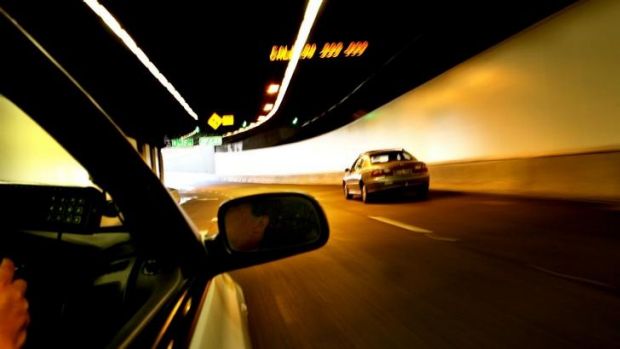NSW Health has raised concerns about air quality in the tunnels to be built for the proposed NorthConnex motorway under Pennant Hills Road.
NorthConnex, planned to link the M1 and M2 motorways in Sydney, would include the largest road tunnels yet built in the city, and the prospect of ventilation stacks in Pennant Hills and Wahroonga has generated significant community debate about air pollution in the area.
 Motorists driving through the planned nine-kilometre NorthConnex tunnels may be exposed to dangerously high levels of nitrogen dioxide. Photo: Jim Rice
Motorists driving through the planned nine-kilometre NorthConnex tunnels may be exposed to dangerously high levels of nitrogen dioxide. Photo: Jim Rice
But in a submission on the project, the state’s chief health officer, Kerry Chant, has homed in on the prospect of poor air quality for motorists driving through the planned nine kilometre tunnels.
Dr Chant’s submission notes the project’s own documents state nitrogen dioxide concentrations in the tunnels are expected to regularly exceed 300 micrograms a cubic metre (µg/m3).
Concentrations at or above this level, according to a National Health and Medical Research Council study, are associated with a significantly increased allergic response in asthmatics if they are exposed for half an hour or more.
Dr Chant also writes: “The NHMRC has also stated that ‘motorists start to experience adverse health effects when particles exceed 500 µg/m3’, a level predicted to be reached at the end of the north bound tunnel,” if World Road Association assumptions are used.
Nevertheless, the project’s proponents, motorway company Transurban, says there will be no adverse health effects in the tunnels.
The company, which says conditions in the tunnels will meet air quality criteria, says the NorthConnex tunnels could not be compared with other road tunnels in Sydney, such as the notorious M5 East, because they have been designed to incorporate the lessons learned from previous road tunnels.
“NorthConnex will be flatter without the significant gradient that occurs in the M5 East, there will be dedicated outlets for each tunnel as close as possible to the exit portals and we will not permit air to be re-circulated from one tunnel to another,” a spokeswoman said.
In addition, the spokeswoman said, the NorthConnex tunnels will be wider and higher than the M5 East, and are expected to contain significantly less traffic.
Dr Chant also recommends that Transurban use more conservative assumptions to model the effects of changes in air quality.
In the project’s environmental impact statement, in-tunnel air quality predictions are based on “most likely” traffic scenarios – in other words, relatively free-flowing traffic.
“It would assist assessment of in-tunnel air quality if results were presented for traffic moving at the range of speeds for which design criteria have been established (ie 20, 40, 60 and 80 km/h),” Dr Chant’s submission says.
The Transurban spokeswoman said a report to be released in response to submissions on the EIS would include air quality modelling of different traffic speeds.
A spokeswoman for Roads Minister Duncan Gay said in an email: “This is a normal part of the EIS submissions process to have submissions from agencies requiring further clarification. There will be a formal response to all submissions in a report to be made public next month.”
